Vanke Business Center, Foshan, Guangdong, China
Monday–Friday,
10:00–19:00 (UTC+8)
Vanke Business Center, Foshan, Guangdong, China
Monday–Friday,
10:00–19:00 (UTC+8)


In this guide, we will share step-by-step instructions — from finding a supplier and quality inspection to logistics, customs clearance, taxes, cost calculation, and risk minimization.
We will also pay special attention to the specifics of working with private buyers and businesses and conclude with an overview of Globus's comprehensive furniture import services from China.
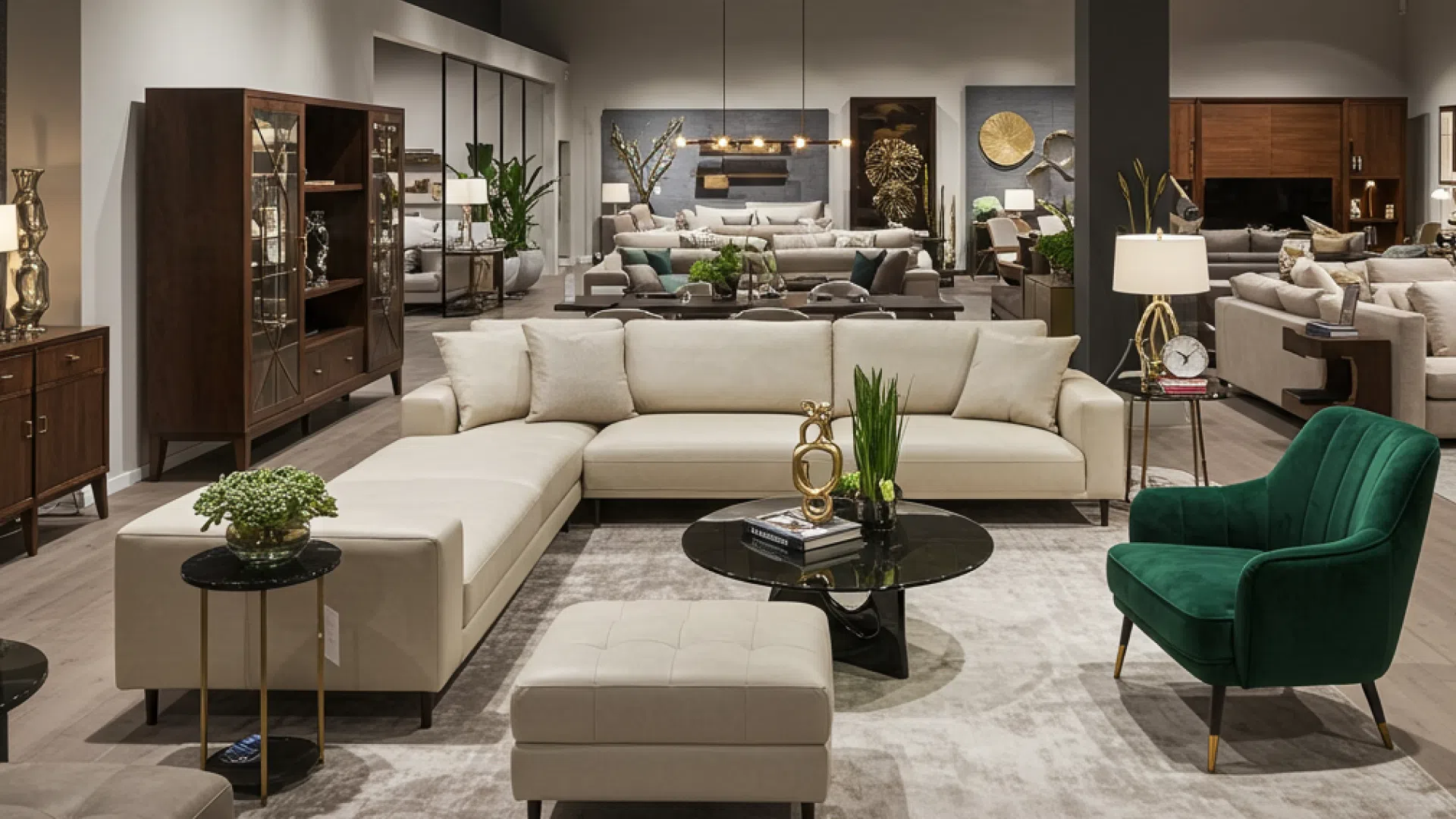
Chinese manufacturers offer furniture at wholesale prices significantly lower than retail prices in Western countries. Even after adding shipping and import costs, the total expense often remains lower than buying domestically, especially for large orders. Many leading furniture brands are manufactured in China, so you can source similar quality products at a fraction of the cost.
Chinese furniture manufacturers offer an unparalleled range of designs and styles. The options are vast and varied, from traditional wooden furniture to ultra-modern minimalist pieces. Furniture can be made from diverse materials, including wood, metal, rattan, and even sustainable options like bamboo.
Chinese factories cater to different aesthetics, offering everything from classical European designs to contemporary Asian-inspired pieces. Buyers can also opt for custom-made furniture tailored to their needs, ensuring each piece perfectly fits their space. This immense variety makes China the go-to destination for furnishing any home or business, regardless of style or preference.
Another significant advantage of importing furniture from China is the ability to customize designs. Many manufacturers offer Original Equipment Manufacturing services, meaning they can replicate specific designs or create bespoke pieces to match the buyer's specifications. This is particularly appealing for businesses such as hotels, offices, or interior designers who may require furniture tailored to their brand identity or specific project needs.
By working directly with Chinese suppliers, you can ensure that the furniture meets your exact vision, whether you're looking for a custom color, unique design features, or furniture that fits an unconventional space.
While many people associate China with low-quality products, the reality is different today. Over the past few decades, Chinese furniture manufacturers have significantly improved their standards. Many factories now produce high-end furniture that meets international quality, durability, and safety standards.
Whether wood, metal, or upholstered pieces, Chinese manufacturers have invested heavily in advanced technology, processes, and quality control measures. As a result, they now produce durable furniture built to last and rival Western-made alternatives but with much lower labor and overhead costs.
Importing furniture from China saves cost without compromising style or durability. In this guide, we'll cover everything you need to know to buy and import furniture from China in 2025.
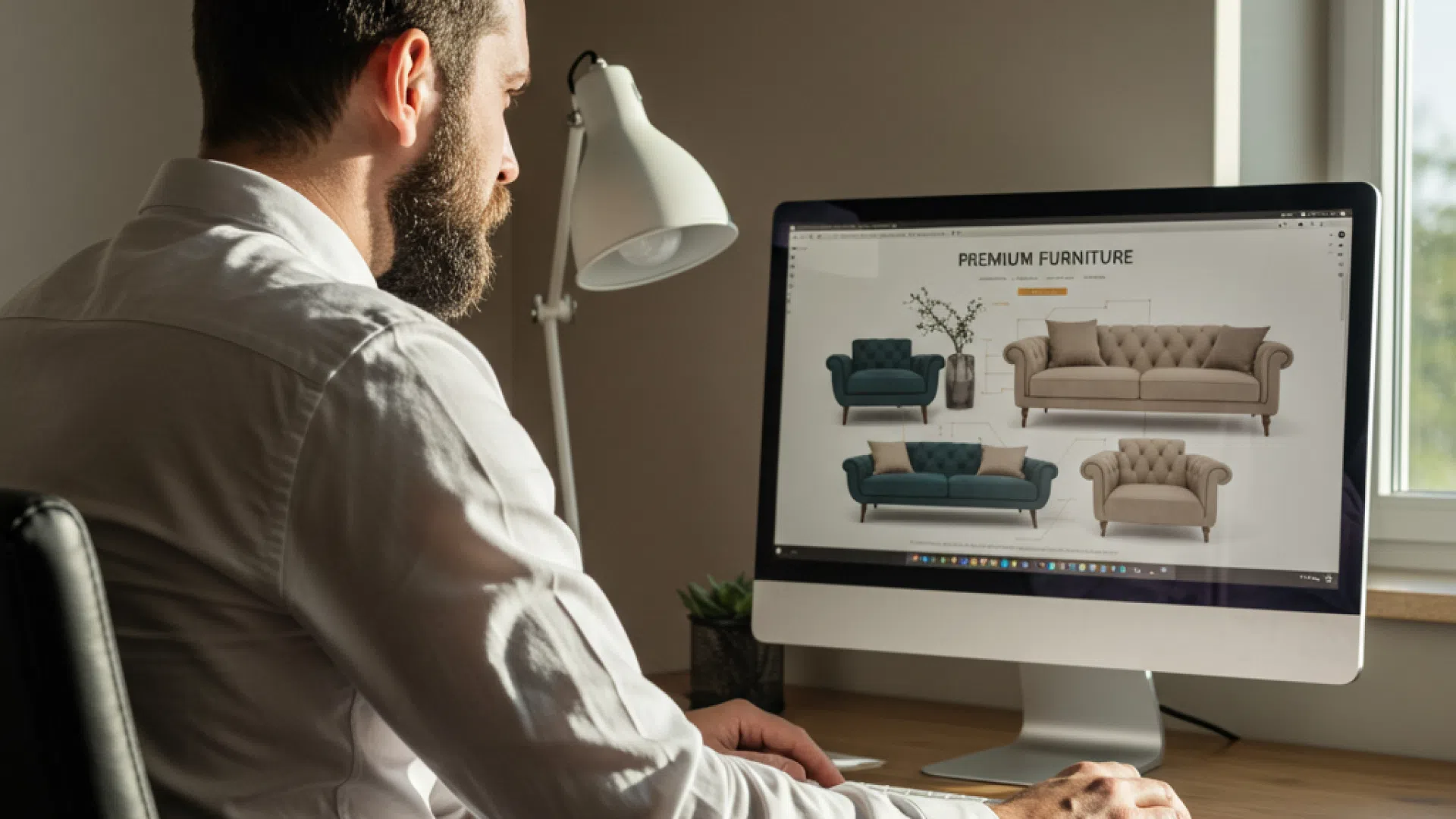
The first step is sourcing: identifying trustworthy Chinese furniture suppliers who offer the products you need. This can be done online or via in-person visits. Key avenues include major B2B platforms, famous furniture markets, trade fairs, and sourcing agents.
One way is through B2B platforms, such as websites like Alibaba.com, Made-in-China.com, and Global Sources. An equivalent for the domestic Chinese market is the website 1688.com. Often, prices there are lower, but an intermediary might be needed since the site is entirely in Chinese.
Typically, such platforms feature product photos, descriptions, minimum order quantities, and prices. However, the prices in the catalogs can be indicative, and the specific cost will depend on the number of items, the choice of materials, and the delivery terms. Therefore, after the initial selection, it's necessary to contact the supplier to obtain the current price and order conditions.
Additionally, some suppliers have their own websites or social media pages (e.g., Instagram or Pinterest pages showcasing furniture designs) — but proceed carefully and verify legitimacy if you go outside the major platforms.
❗️It's worth noting that despite ratings and reviews from buyers, it's challenging to be 100% certain of a manufacturer's reliability on such platforms. There's a risk of encountering unscrupulous companies, fraud, or the delivery of low-quality goods.
China regularly hosts major furniture exhibitions, such as the China International Furniture Fair in Guangzhou and Shanghai, the Canton Fair, and others. At these events, you can see the factories' product range, examine the quality of samples and study catalogs.
Additionally, China has a large number of furniture markets. For example, the Lecong market in Foshan is a gigantic cluster of furniture shopping centers, often called the "furniture Mecca." There, you can find showrooms with samples from hundreds of manufacturers.
However, visiting such large-scale venues requires a lot of time and effort. Searching for the necessary items, communicating with numerous sellers, and comparing offers can be tiring and don't always yield the desired result.
The most convenient option for finding furniture in China is a furniture shopping tour. On such a trip, you will be accompanied by an interpreter and a personal manager who will help you choose all the necessary items. You will visit premium showrooms from trusted manufacturers that we will select in advance according to your wishes and preferences.
If you cannot travel to China or simply want expert help, hiring a China-based sourcing agent or company can be a smart move.
Expertise: Companies that specialize in furniture imports know the industry in China intimately. They often have a network of pre-vetted factories they've worked with.
Negotiation & pricing: Agents and companies can negotiate better prices and terms using local language skills and relationships. They know the reasonable price range for a given item to avoid overpaying.
Quality control: Companies will inspect the furniture during production and before shipping, ensuring that the items meet your specifications and quality standards. This is crucial for avoiding unpleasant surprises, like receiving defective furniture.
Logistics & consolidation: Sourcing companies often offer end-to-end service, including arranging shipping. If you buy from multiple suppliers, they can consolidate goods into one shipment to save costs.
For example, the Globus website offers an online catalog of premium furniture priced in dollars. It features only verified manufacturers and popular models, significantly simplifying selection.
By choosing this option, you save time and effort. We independently conduct quality control of the products at all production stages and take care of all issues related to delivery, customs clearance, and cargo insurance.
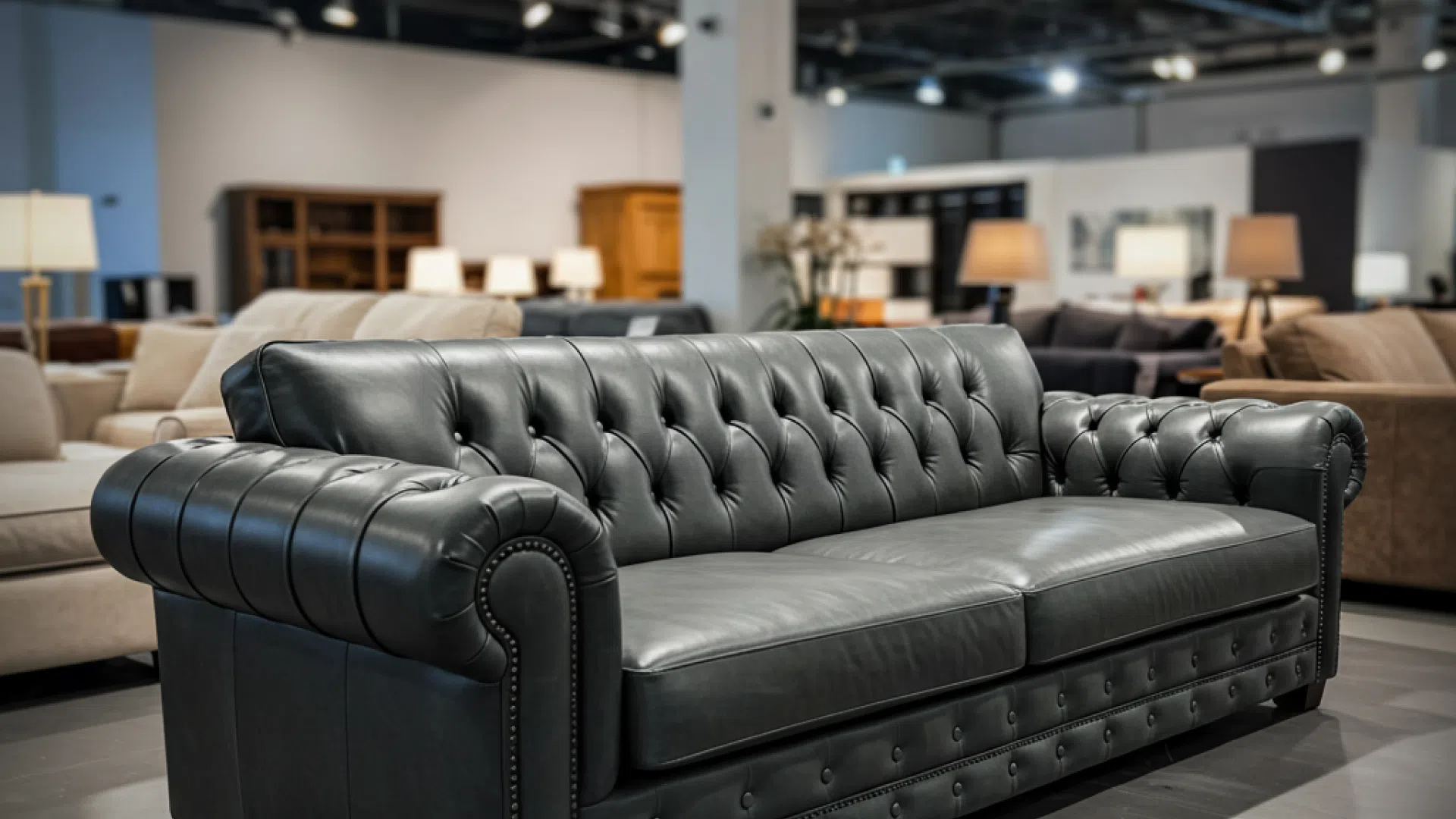
If you independently purchase furniture from China without the participation of specialized companies, the next critical aspect after selecting suppliers is ensuring quality and compliance.
Factory audits: If possible, have the supplier audited or visited before placing a big order. This can verify that the factory has the production capability it claims to have and follows good manufacturing practices. You can hire third-party inspection companies in China to do factory audits.
In-production inspections: You can arrange an inspection for large orders when production is 20-30 % complete. This can catch issues early. For example, suppose the wrong grade of wood is being used, or the stain color is off. In that case, it's easier to fix mid-production than after everything is finished.
Pre-shipment inspection: This is highly recommended. Before you release the final payment and the items leave the factory, have an inspector check the finished goods. They will usually do a random sampling to verify dimensions, functionality, packaging quality, etc.
Compliance checks for materials: If the furniture involves fabrics, foams, or paints, ensure they meet relevant standards, like flammability standards in specific markets or formaldehyde emission standards for wood composites. For example, some countries have limits on formaldehyde in wood products (EU and California regulations) — ask suppliers for test reports or certificates if this is relevant to you. Children's furniture might have stricter safety standards, no sharp edges, non-toxic finishes, etc.
When importing, you must comply with customs regulations and product regulations of the destination country:
Customs documentation: Ensure the supplier provides proper commercial invoices, packing lists, and Bill of Lading/Air Waybill. The invoice should accurately describe the goods and their value. Mis-declaring to reduce duties is illegal and risky. Also, certain materials (like solid wood) might need additional documents (e.g., a fumigation certificate or phytosanitary certificate).
Importer registration: If you're buying furniture for a business, you may need an importer registration or license. For example, India requires an IEC (Importer-Exporter Code) for commercial imports. In the US, you typically need a Tax ID/EIN for customs or use a customs broker who can clear on your behalf. You'd need a Business Number with an import/export account in Canada. Check your country's requirements — importing as a business vs. personal import might have different rules. Personal furniture imports are generally allowed without a special license, but you'll still pay duties/taxes; commercial quantities require proper registration.
Safety standards: Some countries have specific furniture regulations. In the US, upholstered furniture may need to comply with flammability standards; though federal standards are evolving, California's TB117-2013 is often used as a benchmark. Cribs and baby furniture in the US must meet strict Consumer Product Safety Commission (CPSC) standards. Canada and India might have labeling requirements or quality standards. Always check if your product category requires any certifications. For instance, if the furniture includes built-in electrical components (like an electric recliner or LED lights in a cabinet), it must meet electrical safety standards (UL certification in the US, CE in Europe, etc.).
Anti-dumping/trade restrictions: Be aware of any special tariffs. For example, Canada has imposed anti-dumping duties on certain Chinese furniture — specifically, as of 2021, upholstered seating from China faces duties up to 295.5% due to dumping rulings. The US has had Section 301 tariffs on Chinese goods, which add extra tariffs on furniture from China. Keep these in mind as they significantly impact cost.
Proactively managing quality control and compliance will help you avoid many potential pitfalls. Spending more time or money on inspections and paperwork upfront is much better than receiving a container of unsellable furniture or facing customs issues. In summary, vet your supplier, monitor production, and ensure all import documents are in order.
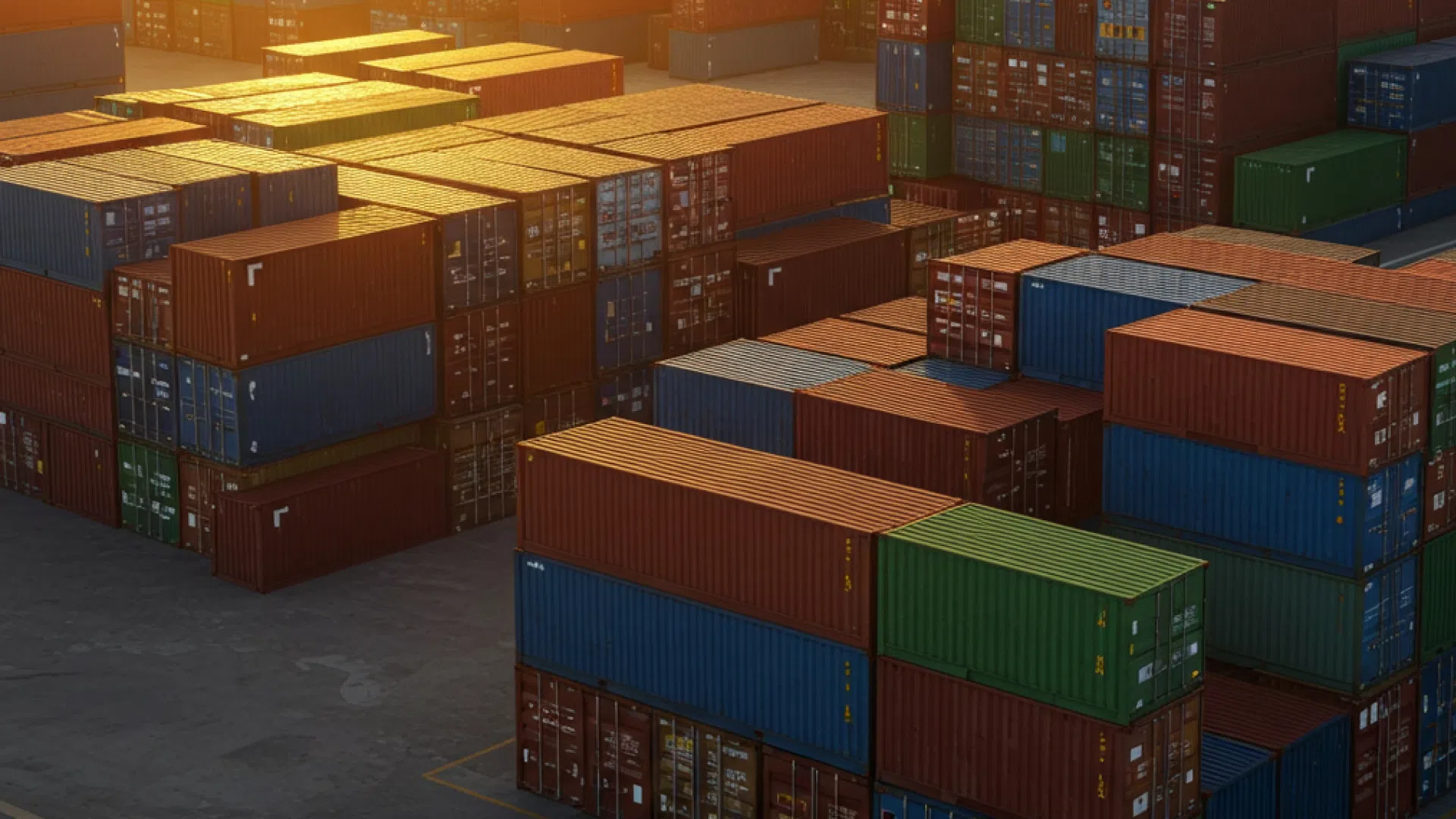
Importing furniture involves customs regulations, import duties, and taxes in the destination country. These can vary widely between countries, so we'll break down the basics for the USA, India, and Canada, as these are common destinations.
Before diving into country specifics, note that furniture generally falls under HS Code chapter 94 of the Harmonized System, which all countries use as a basis for tariffs. Specifically, HS 9403 covers "Other furniture and parts thereof," which includes most furniture except seats, medical furniture, and some specific categories. When you import, you or your customs broker will classify each item's HS code — which determines the duty rate.
Also, most countries calculate import duty on a CIF value basis — meaning the cost of the goods + Insurance + Freight is used for duty calculation.
The United States is a large market for Chinese furniture. Importing here is straightforward in terms of procedure. Still, you need to be aware of the tariff rates and fees:
Basic customs duty: The standard US import duty for furniture depends on material and type. Many furniture items, such as wooden, metal, plastic furniture, etc., have low to moderate duty rates, often 0% up to around 10% under the Most-Favored Nation (MFN) status that China has.
For example, wooden bedroom furniture might have a duty of ~1-5%, and metal office furniture around 0-5%. Some specific categories are duty-free. You should check the US Harmonized Tariff Schedule for the exact subheading. Standard rates for furniture categories include ~0-8% on upholstered furniture and ~0-10% on wooden or metal furniture.
Section 301 tariffs: Besides the regular duty, the US currently imposes extra tariffs on Chinese-origin goods due to the ongoing trade measures (Section 301). Furniture from China is affected: all furniture under heading 9403 from China is subject to an additional 25% tariff. This has been in place since 2018 and continues as of 2025.
For example, if a wooden table typically has a 5% duty, you also pay 25% on top of that, effectively 30%. This is significant and must be factored into your cost calculations. If these Section 301 tariffs change in the future, be sure to get the latest update. Currently, the plan is for 25% extra.
De minimis threshold: The US allows duty-free import for shipments valued under $800, which is known as the Section 321 de minimis rule. However, furniture is often high-value or in bulk, so if you're importing a complete set or multiple pieces, you'll likely exceed $800. That threshold is more useful for small parcels. Also, if US Customs suspects you're splitting a larger shipment into many small ones to evade duty, they can crack down on that.
Customs clearance: If the value exceeds $2,500, a formal entry with US Customs and Border Protection (CBP) is required. You'll need a record importer with a tax ID (EIN or SSN). It's highly recommended that a customs broker handle the entry paperwork and clearance, as they know the process and any applicable import permits. Typically, furniture doesn't require an import license in the US. Still, as mentioned, certain materials like wildlife products or plant materials might need additional clearance.
Import taxes/fees: The U.S. doesn’t have a nationwide VAT or GST. Instead, you pay:
Import duty: as discussed, base rate + 25% China tariff if applicable.
Merchandise processing fee: This is a small ad valorem fee on formal entries — 0.3464% of the cargo value (minimum $27.75, max $575 as of 2025).
Harbor maintenance fee: For ocean freight imports, 0.125% of the value is charged.
For USA importers, identify the HS code of your furniture to know the base duty. Then add 25% if it's from China. Ensure you have a broker arrange clearance, and be ready to pay the duty, MPF, and HMF. Also, plan for 2-6 weeks shipping time by ocean.
India is another big market for imported furniture, especially high-end or specialty pieces. However, importing into India requires higher duties and more regulations than the US.
Customs duty rate: India historically has had high tariffs on furniture to protect domestic industry. As of 2024-2025, the basic customs duty on furniture from China is about 25% of the CIF value in many cases. However, the Union Budget 2025 announced a slight duty reduction on furniture imports to 20%. So, for a $1,000 CIF value, the basic duty would be $200.
Always verify the HS code; furniture falls under Chapter 94, where many items were at 25%. Budget changes might adjust it to 20% across furniture categories, but double-check with the latest customs tariff schedule or notifications.
Social welfare surcharge: India often adds a 10% surcharge on the customs duty, essentially 10% of the duty amount, not the goods value. So, if the basic duty is $200, an extra $20 is added as SWS. SWS sometimes gets exempted on certain items; it's a bit inconsistent, but assume it applies unless told otherwise by the latest tariff.
Integrated GST on imports: India applies GST on imported goods after the duty. For furniture, GST is 18%, and it is calculated on the CIF value + duty. For example, if CIF is $1,000 and duty comes to $220, GST is 18% of $1,220 = $219.6. This GST replaces the domestic GST you'd pay in India.
For example, if the value is $1,000, 20% duty = $200, SWS 10% on that = $20, subtotal $1,220, then 18% GST = $219.6. Total tax = $200+20+219.6 = $439.6 (approximately 44% of CIF). It would be even higher if the duty were still 25% (~50+%). So, expect the landed cost in India to be roughly 40-50% higher than FOB China price after all import taxes.
This means importing furniture into India is costlier, which is why it's typically done for premium or unique pieces that justify the cost or large-scale projects where local supply is insufficient.
Import license/procedure: You need an importer-exporter code from the DGFT in India for commercial imports. It's a registration number. Without it, you can't clear goods through customs commercially. Individuals importing a few items for personal use might not need an IEC. The courier or freight company can handle it as a one-off personal import, but they would still pay the duties. Also, India has specific import procedures — you'll likely need a customs clearing agent to file a Bill of Entry and clear the goods. Ensure that invoice, packing list, bill of lading, certificate of origin if any benefits, etc. are in order.
Standards and restrictions: Furniture imports to India must comply with material-specific rules. For instance, check the Plant Quarantine regulations to see if any furniture is made of plant-based materials. Indian customs have required quarantine clearance for wood items.
Also, ensure no restricted animal materials, like some exotic leathers or ivory, which would violate wildlife protection laws. Generally, standard wooden or metal furniture is fine. Electrical components should conform to Indian electrical standards. India uses 230V, so if you're importing motorized desks or beds with electric parts, they should be compatible, or you should change components.
Compliance and labeling: The Bureau of Indian Standards doesn't mandate general furniture certification. But it's wise to ensure any upholstery foam meets fire safety, especially for commercial installations like hotels might require. Also, if furniture is for kids or a public space, ensure safety norms (no sharp edges, etc.).
Logistics in India: Indian ports can be slow in clearance, and you might face demurrage if the paperwork isn't correct. Work with an experienced freight forwarder in China and partners in India.
Shipping by sea to India typically takes 2-4 weeks from China, plus time for customs, which can take several days or more. Be prepared for the bureaucracy — stay patient and organized.
Ensure you have an IEC and double-check any quarantine requirements for wood. Despite the costs, many Indian consumers import luxury furniture from China for unique designs or superior quality — just factor in all the taxes to price your products appropriately.
Canada's process sits somewhere between the US and India in complexity. Tariffs in Canada are generally not as high as in India, but there are some unique aspects.
Customs duty rates: Canada's base MFN duty rates for furniture are relatively low. Furniture can often be duty-free or around 8-9% at most. For example, Canada's tariff schedule for furniture items ranges from 0% to 9.5%, depending on the specific type. Many wooden and metal furniture items are 0% under MFN, while others may have a small duty. It's crucial to classify the HS code: e.g., upholstered seats might have a different rate than wooden tables. But generally, expect a single-digit percentage or none as a basic duty.
Anti-dumping duties for upholstered furniture: One major factor is that almost all upholstered seating coming from China is subject to anti-dumping duties of around 295.5% (basically prohibitive) unless the exporter is on a list of those with individual lower rates. A handful of Chinese manufacturers got assigned lower rates ranging from ~20% to 226%. Still, if you buy from a random supplier, you must assume the worst-case ~296% applies. This measure was in response to a complaint by Canadian furniture makers and is enforced by CBSA/Canadian International Trade Tribunal.
Importing upholstered sofas or chairs from China to Canada is currently not viable due to this duty — unless you have an exporter with a specific low rate ruling or the product is outside the scope. Non-upholstered furniture, such as wooden tables, metal cabinets, etc., is not affected by that anti-dumping case, so those can be imported normally at low MFN duties. Always check the latest status if you plan to import upholstered items. Consult CBSA's notices to see if the duties are still in effect or if any exclusions exist.
GST/HST: You'll pay 5% GST on the CIF value + duty when importing into Canada. Additionally, depending on the province where the goods clear customs, PST or HST might apply:
Canada uses a system where some provinces have combined GST+PST into Harmonized Sales Tax. For example, Ontario has 13% HST, which includes the 5% federal portion. On imports, just 5% of the federal GST is typically collected by CBSA, and the provincial sales tax is handled later. If you're a business, you will remit it when selling; for personal import, some provinces may charge PST on import too — it depends, but often CBSA collects just GST, and you self-assess PST. According to the CBSA guidelines, GST is always charged on imports. HST for certain provinces might be collected if CBSA does so on behalf of that province at import.
If you import into BC, you'll pay 5% GST to CBSA. Later, as a business, you'd charge your customer GST + PST. If you're the end consumer, BC may require you to pay PST on that import (CBSA might collect it, or you can pay after. This gets into tax technicalities; for simplicity, assume at least the 5% GST is to be paid at import. If you're a registered business in Canada, that GST can be claimed back as input tax credit on your GST return, effectively making it a wash.
De minimis threshold: Canada has a low de minimis for duty. However, practically anything over $20 CAD for goods from China will be assessed GST and possibly duty. Any furniture piece will exceed that. There is no duty-free easy threshold like the US one, so you must make a formal entry for almost any furniture shipment.
Customs clearance: A customs broker helps handle the entry and paperwork with CBSA. They'll classify the goods, apply trade agreements or special provisions, and calculate duties/taxes. Canada's process is similar to the US's, using brokers and paying CBSA via them.
Trade agreements: One advantage — if you were importing furniture not from China but from countries like Vietnam, Malaysia, etc., some might have preferential duties. But China doesn't have an FTA with Canada, so you pay MFN rates.
Standards: Canada has no overarching furniture safety law, but any electrical components must be CSA or UL-approved for use in Canada. If you import something like an electric fireplace as part of a furniture piece, ensure it's certified. For children's furniture, like cribs and bunk beds, there are regulations under Health Canada (cribs must meet specific safety standards, etc.).
Logistics: Shipping time from China to Vancouver is 2-3 weeks by sea. Customs clearance in Canada is typically quick if all is in order, but ensure proper bilingual (English/French) labeling where required to avoid delays. For example, suppose you import something that qualifies as a consumer product needing bilingual instruction. In that case, it is rare for furniture, except assembly instructions should be bilingual for retail products.
Canada has low base duties (0-9.5%), plus 5% GST at import (refundable for businesses). However, watch out for anti-dumping on upholstery, which is nearly prohibitive. If you stick to non-upholstered furniture or have a specific exemption, importing to Canada is not too costly tax-wise. Always keep compliance in mind — labeling and safety standards — and use a broker for smooth clearance.
Outsourcing all import processes to a specialized company can be a beneficial solution. Professionals will help avoid mistakes that increase the risk of losing the saved margin.

The logistics of getting furniture from the factory in China to your warehouse or home is a significant piece of the puzzle. Furniture is bulky, and you want to choose a shipping method that balances the goods' cost, time, and safety. We will discuss container shipping, air freight, and what to expect regarding timelines and handling.
Sea freight — full container load: This is the most common method for importing furniture. You book an entire shipping container for your goods. Standard container sizes are 20-foot (approximately 33 cubic meters capacity) and 40-foot (approximately 67 cubic meters). If you have enough furniture to fill a significant portion of a container, FCL is usually the most cost-effective.
Furniture often justifies a full container even if the value isn't tremendous. FCL also means your goods are not mixed with others, reducing handling and risk of damage or misrouting. As a rule of thumb, if you have around 15 cubic meters or more of goods, consider FCL.
Sea freight — less than container load: If your shipment is too small to justify a full container, you can ship by LCL, where your furniture shares container space with other importers' cargo. You pay for the volume in cubic meters that your goods occupy. LCL can be economical for smaller loads (e.g., a few furniture pieces or a small household's worth of furniture). However, be aware that furniture is large and heavy so that LCL costs can increase. Sometimes, LCL can cost more per unit than if you just had a full container, especially once you go beyond 8-10 cubic meters.
Additionally, LCL means more handling (consolidation and deconsolidation at warehouses), which can increase the risk of damage to delicate furniture. If going LCL, ensure your furniture is well packed.
❗️Globus only delivers items in individual containers. This significantly reduces the risk of damage, scratches, chips, and breakages often occurring during the numerous consolidated cargo transshipments.
Air freight: Flying furniture by air is generally extremely expensive due to weight and volume and is rarely used, just in exceptional cases. Air freight can cost 5-10 times more than sea for furniture. It's only viable if you need something urgently (e.g., a custom piece for a project deadline) or high-value lightweight items. Transit time by air from China to, say, the US or Europe is just a few days of flight plus a couple of days customs clearance, so maybe under a week total — whereas sea is several weeks. So it's a trade-off of time vs cost. For most large shipments, air freight is not practical.
When negotiating with suppliers, clarify the terms:
EXW (Ex works): You handle everything from the factory onward (pickup, export, shipping). Probably not ideal unless you have a freight forwarder doing pickup.
FOB (Free on board): Common term — the supplier covers the cost of getting goods onto the vessel at the port, including transport to the port and export customs clearance. You cover ocean freight and beyond. FOB is straightforward and often preferred.
CIF (Cost, insurance, freight): Supplier quotes, including ocean freight to your destination port. You will still handle import clearance and local charges.
DAP/DDP (Delivered at place / delivered duty paid): Some suppliers/agents offer door-to-door delivery. DDP even includes import duty pre-paid by the seller, which is rare for large shipments. For furniture containers, DAP (delivery to your door, not including duty/tax) can sometimes be arranged by your forwarder.
Furniture can be fragile (glass, mirrors) or awkwardly shaped. Sometimes, suppliers build custom wooden crates or frames to secure furniture inside the container. This is great for protection, but be aware it adds weight/volume. A well-stuffed container with furniture often uses blankets, airbags, and straps to keep items from shifting. If you have a mix of heavy and light items, ensure heavy ones are at the bottom, etc.
Ocean freight costs: These fluctuate with seasons and global shipping demand. As of 2025, container shipping rates have normalized from the extreme highs seen in 2021. Rough estimate: depending on the season, a 40' container from China to the US West Coast might be a few thousand dollars. To Europe or India, similar variations ($3k-$6k). LCL is charged per cubic meter, often $100-$200+/cbm, depending on the route. Always get a quote from a freight forwarder for accuracy.
Don't forget China's local fees: trucking to port, export clearance, and handling, which could be a few hundred dollars FOB. And destination port charges: unloading, terminal fees, customs broker fee, local delivery to your place, etc. For example, landing a container in the US might incur a few hundred in port fees and a few hundred for trucking from the port to your warehouse. These add up, so budget $1000-$2000 extra on top of pure ocean freight for all the side fees.
Ocean shipping from China varies by destination:
To USA/Canada: If West Coast (Los Angeles, Vancouver, etc.), about 14-20 days at sea. East Coast via Panama Canal could be 30-40 days. Plus, adding time for customs clearance and trucking out — overall, 3-6 weeks door-to-door is a fair estimate.
To Europe: About 30-40 days by sea to Northern Europe from China.
To India: It's pretty quick. It takes 15-20 days from China to Indian west coast ports (Mumbai) and perhaps a bit more to the east coast (Chennai) — roughly 3-4 weeks, including inland.
To Australia: About 2 weeks.
These are port-to-port on water; always add a buffer for handling, especially if consolidation or transshipment is involved.
Remember that peak seasons can cause backlogs; unexpected events such as bad weather, port strikes, etc., can also add delays.
To learn more about Globus's furniture delivery methods or any other details, please get in touch with us using any convenient method. Our managers are ready to answer all your questions!
Local logistics: Once furniture arrives, you have to get the goods from the port to the final destination:
If you have a full container, you can deliver it to your address by truck. Usually, you get 3-5 free days of the container chassis to unload, and then charges apply. So, plan labor to unload immediately. If you don't have space, you might pay the trucking company to take it to their warehouse, unload it into a warehouse, and then deliver it by smaller truck.
If LCL, the cargo goes to a Container Freight Station, where it's unloaded. Then, you either pick up your pallet/crate or have it delivered by truck.
If you're importing furniture for your house once, consider using a door-to-door service with local delivery — dealing with port and customs yourself is complicated.
Insurance: Always get marine cargo insurance. It's relatively cheap and covers losses or damage at sea. While container accidents are rare, they can still happen.
Avoiding damage: As mentioned, furniture must be well-packed. Use bubble wrap, foam corner protectors, and double-wall boxes for boxed items. Wooden crates for high-end items are prudent. Vibration during transport can loosen screws — some importers choose to ship furniture knocked down if possible, which reduces volume and risk. Many flat-pack furniture items ship very well. Fully assembled pieces like sofas should be in thick plastic wrap, cardboard, or crated. If using a freight forwarder, ask for loading pictures — you can often request the warehouse in China to send photos of the stuffed container. Hence, you see how items were placed and secured.
When producing custom-made furniture, the average timeframe from the start of work on the project to receiving the items is 4 to 5 months. Plan the timeline with some cushion.
Let's consolidate what happens when your furniture shipment arrives and how to get it in hand:
Arrival notice: For FCL, the shipping line or your forwarder will issue an arrival notice a few days before the vessel docks. For LCL, the consolidator will notify you when it's ready for pickup. This notice will list where to go or who to contact for clearance.
Customs broker: Engage a customs broker ahead of time so they can prepare the entry documents. They will need your commercial invoice, packing list, and shipment details. They'll file the entry, pay duties on your behalf, and coordinate any exams if customs select your container for inspection.
Customs examination: Random or targeted exams can happen. If customs or other agencies want to inspect, it can add a few days and some fees. For instance, the US CBP might do an X-ray exam or perform a physical devanning. Canada CBSA might inspect, particularly for anti-dumping cases or quality. Just cooperate and let your broker handle it. If paperwork is in order, it's usually fine.
Duties and taxes payment: Ensure funds are ready for duty payment. Brokers often require you to have a bond (in the US) or a high-value security. For one-time importers in the US, you might pay a single-entry bond fee or get a continuous bond if you import often.
Release and pickup: Your freight is released once customs are cleared and port fees are paid. For FCL, you'll arrange trucking. Your trucker will pick up the container from the port or rail yard. Make sure to handle importer security filings. For the US, the ISF should be filed 24 hours before ship departure from China — your forwarder usually does this, but don't neglect to give them the information timely. For LCL, you get a pickup order to collect your goods from the warehouse or arrange local delivery after release.
Delivery and unloading: If delivering to your warehouse, have a forklift or pallet jack for heavy items. If delivering to a residence, you might need a truck with a lift-gate and perhaps inside delivery service. Plan how you'll dispose of packing material — importing a furniture container yields a lot of cardboard, plastic, and possibly wood packaging.
Post-delivery checks: Inspect your items as soon as possible. If there's any damage or missing items, take photos and document it. Insurance claims usually must be filed quickly. You have grounds to claim if it was clearly due to mishandling in transit. Note that minor nicks or scratches might not be covered if not due to a specific incident, but significant damage would be.
Working with professionals: If you arrange it that way, freight forwarders can handle the entire door-to-door process. Some importers prefer a single point of contact: the forwarder coordinates pickup from the factory, books the ship, clears customs via their brokerage arm, and delivers to the final destination. This "turnkey" service can reduce the hassle on your end.
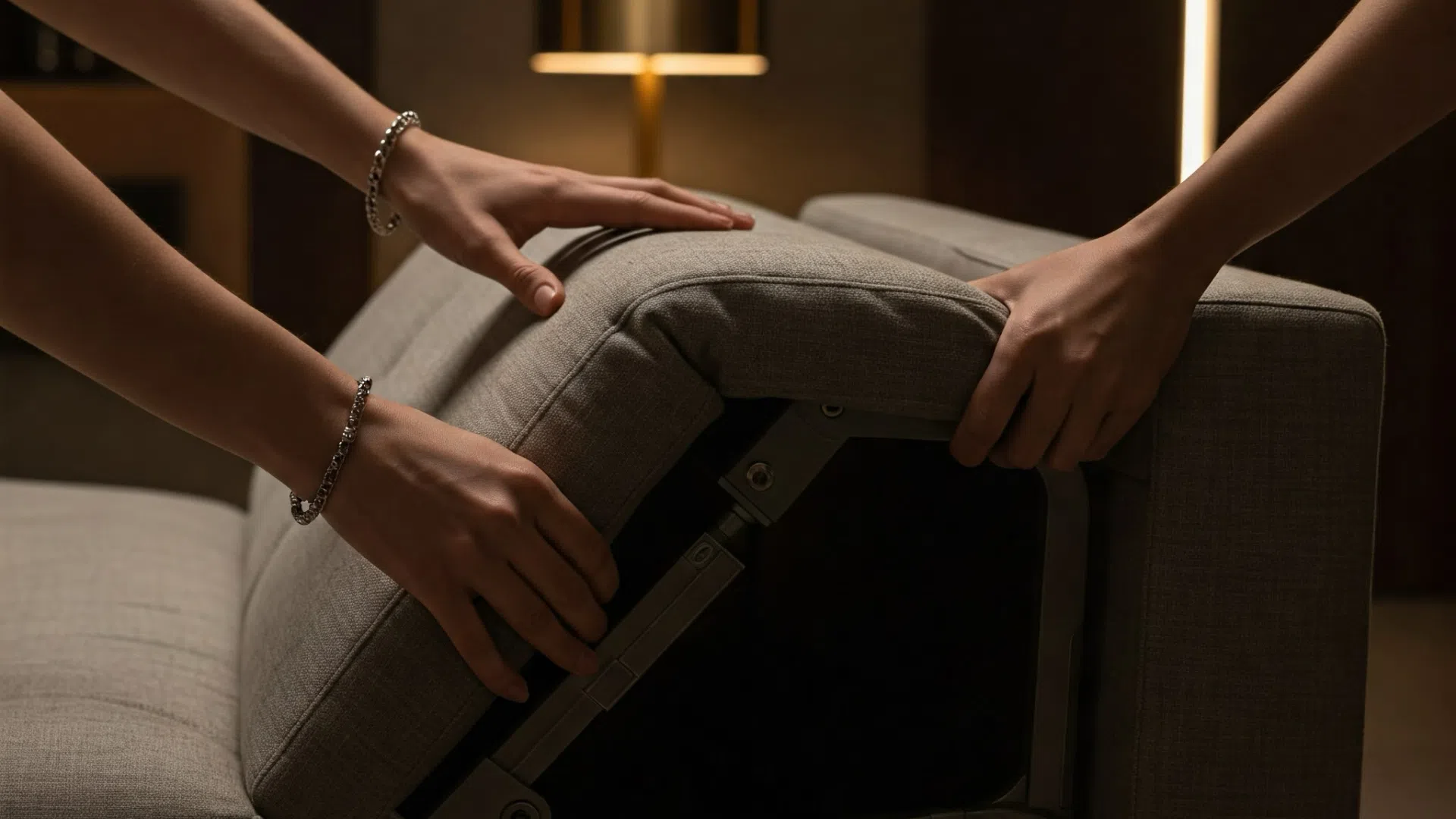
Let's outline the components of cost when importing from China:
Product cost: The price of the furniture itself. If you have domestic costs, like paying an agent commission, include that, too.
Inland transport in China: Getting the furniture from the factory to the port. This is often included in the FOB price. Depending on the distance from the factory to the port, it could cost a few hundred dollars. For example, trucking from a factory to Shenzhen port might cost $100-$300.
Export fees: Chinese export customs clearance and port handling are usually covered by the supplier under FOB. If not, a freight agent can do it for a fee.
Ocean freight: The cost of shipping the container by sea. As discussed, it may be $3k-$8k for a full container or $100+/cbm for LCL. This often is the most significant single cost after the product itself.
Marine insurance: Typically ~0.3-0.5% of the shipment value if you take it. So, $150 on a $30k shipment, for instance.
Import duty: Varies by country and product. For particular items, the US has a 3% base duty, India has 20%, and Canada has 0%. If you are in the US, don't forget the 25% China tariff on top. Calculate duty based on the value of CIF (cost + insurance + freight).
Import taxes: In India, the IGST is 18% on value + duty. In Canada, the GST is 5% on value + duty; in the US, it is none.
US MPF (0.3464%) and HMF (0.125%), other countries have token fees too sometimes.
Importing furniture from China can seem complex, but with the proper preparation and partners, it becomes a streamlined process that unlocks tremendous value for your home or business. China offers an unbeatable combination of variety, customization, and cost savings to make your furniture import project worth the effort.
This comprehensive guide covers every stage — from finding reliable suppliers and ensuring product quality to navigating shipping logistics and clearing customs in different countries. By now, you should have a clear roadmap for proceeding confidently.
Here are a few key takeaways to remember:
Do your homework: Research suppliers diligently and understand the regulations of your own country (duties, taxes, compliance). Knowledge upfront saves headaches and money later.
Quality is king: Insist on quality control. This ensures you get what you paid for and that your products satisfy your needs.
Understand all costs: Calculate the landed price, including shipping, duty, and local fees. This whole picture is vital for budgeting. Don't get caught off guard by an expensive surprise at the port.
Leverage experts: Use freight forwarders and customs brokers to handle the complex logistics and clearance. Their expertise smooths the process and helps avoid costly mistakes (like mis-declaring an HS code or missing a document).
Plan ahead: Timing is essential — account for production lead times and shipping durations. Start the import process well in advance if you have a strict deadline, like a project launch.
Stay compliant: Follow import regulations to the letter. Ensure wood materials are properly treated, pay the correct duties, and meet safety standards. Compliance builds a good track record with customs, making future imports easier.
Build relationships: A good relationship with a supplier can lead to better terms, priority production, and problem resolution if issues arise. Treat your supplier as a long-term partner. The same goes for relationships with your logistics providers.
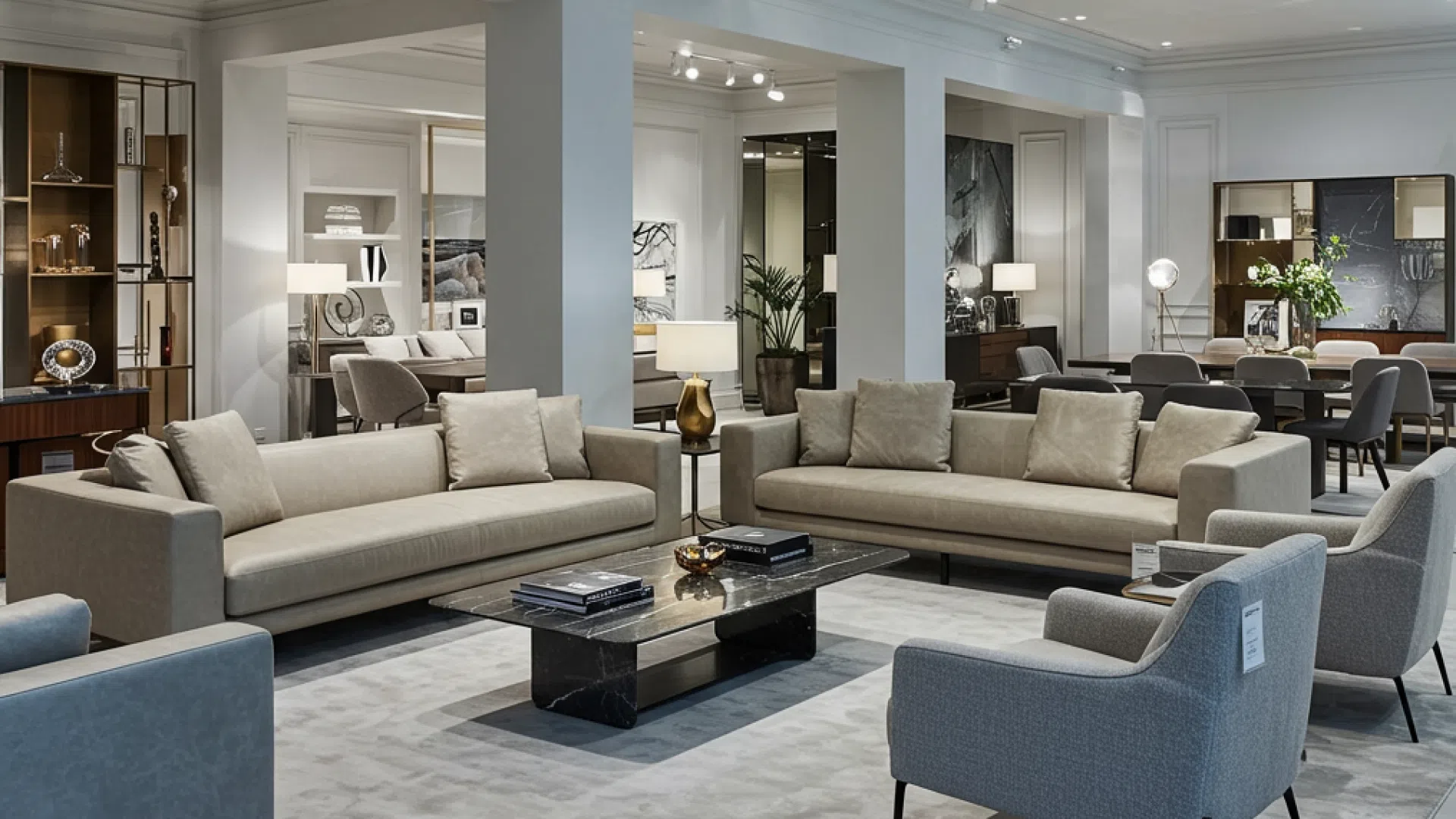
If you lack the time or necessary experience to handle all the described stages independently, it's worth turning to specialists. Globus is a market leader offering comprehensive turnkey furniture imports from China. This means our team takes on the entire cycle, from furniture selection to delivery of the chosen items to your doorstep.
Individual furniture selection. Our large online catalog offers carefully selected premium furniture, lighting fixtures, sanitary ware, and decor items — everything needed for interior design. Globus managers will offer furniture options matching your goals and preferences if assistance is required.
Furniture shopping tours. In addition to online furniture purchases, we at Globus conduct furniture tours — trips to China where you can visit furniture factories and explore the presented assortment accompanied by a translator and a personal manager.
Verified suppliers and quality. Globus collaborates only with trusted factories whose reputation has been confirmed over the years. This is especially important in the premium segment: such factories make high-quality replicas of luxury furniture. Before shipment, each item is checked for order accuracy, and a thorough inspection is carried out, including testing mechanisms and examining upholstery materials. Clients receive photo and video reports at all stages of production. Thus, the risk of defects or discrepancies is minimized.
Favorable prices and transparency. One of Globus's advantages is direct deliveries without unnecessary markups. We work directly with manufacturers, which allows us to obtain the best prices. We ensure 100% calculation transparency — the client knows how much was spent on the goods themselves, on delivery, and on customs clearance. There are no hidden fees — everything is stipulated in the service agreement.
Turnkey logistics and customs. The client doesn't need to think about the delivery process and documents — we handle these issues. Cargo is insured, and consolidation in our warehouses in China guarantees careful packaging. Customs clearance is also included in the service: specialists will correctly declare the furniture, draw up all certificates of conformity, and mark the goods.
If you have any questions, please contact us in any convenient way. The Globus team is ready to provide you with all the necessary information!
Importing furniture from China offers a cost-effective route to a vast selection of quality pieces for homes and businesses. This guide on importing furniture from China shows that the process, from initial research to final delivery, is achievable with careful planning. Whether you decide to navigate the steps independently or seek professional furniture import services, you now understand the key considerations.
We encourage you to apply this knowledge and kick-start your furniture-sourcing project today. Remember, you don't have to do it alone. Contact us for expert assistance in making your furniture import journey smooth and successful. A well-executed import can lead to significant savings and a beautifully furnished space — take action and realize those benefits!

Selected materials from GLOBUS magazine that you shouldn't miss are in our newsletters. Choose and subscribe - we are already preparing a letter for you.

Customs broker fee: This is the fee you pay your broker for clearance service. It might be $100-$300, depending on complexity. Some forwarders include this in their package.
Port charges and delivery fees: In destination — terminal handling, warehouse fees (for LCL), trucking to your door. For FCL, you may pay a destination terminal handling charge, chassis fee, etc. – often a few hundred dollars. Trucking could be a few hundred to over a thousand depending on distance (e.g., port to a city 500 km away). For LCL, CFS station fees and per cubic charges will apply.
Miscellaneous: If any palletization is needed, storage fees if you delay, and exam fees if customs does an inspection, they might charge you drayage and exam station costs. Also, hiring a local team to unload or assemble the furniture is another cost.
Door-to-door delivery. After customs clearance, Globus organizes furniture delivery directly to the client.